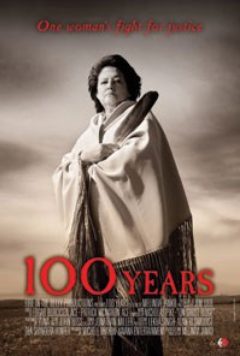Film Review: 100 YEARS: One Woman’s Fight for Justice

100 YEARS: One Woman’s Fight for Justice
Melinda Janko
Fire in the Belly Productions
In the 1880s, the U.S. Federal Government became trustee of vast amounts of land owned by Native Americans. The idea was that the U.S. Department of the Interior would hold and manage these lands for the benefit of the Indian families that had owned them—presumably, this would help those tribes assimilate more quickly into American society, while allowing the government to lease out these lands for natural resources. Perhaps needless to say, the Federal Government never held up its end of the bargain, and never gave out the money they owed the Indians. That is, until Elouise Cobell, a member of the Blackfeet tribe and a Montana banker, decided to sue the government for the billions and billions owed her people.
Over more than a decade, Cobell faced off against several presidential administrations (of both parties) and numerous lawmakers, trying to convince the U.S. Government to pay up. All the while, her people were living in abject poverty—their land impossible to farm, partly thanks to the pollution nearby. Director Melinda Janko follows Cobell through the corridors of power as she continues to make her case. She’s exhausted, sick, frustrated, angry—but always defiant.
There’s a lot to cover here, and Janko has clearly had tremendous access to Cobell and her efforts for some time. But the fact that much of Cobell’s struggle was played out in dry conference rooms with lots of people in suits sitting around tables speaking legalese at times limits the filmmaker’s ability to evoke suspense. Still, Cobell makes for an engaging subject—she’s honest about her struggles, articulate, and passionate. As the film heads toward its very moving denouement, it gains enormous power and resonance.








